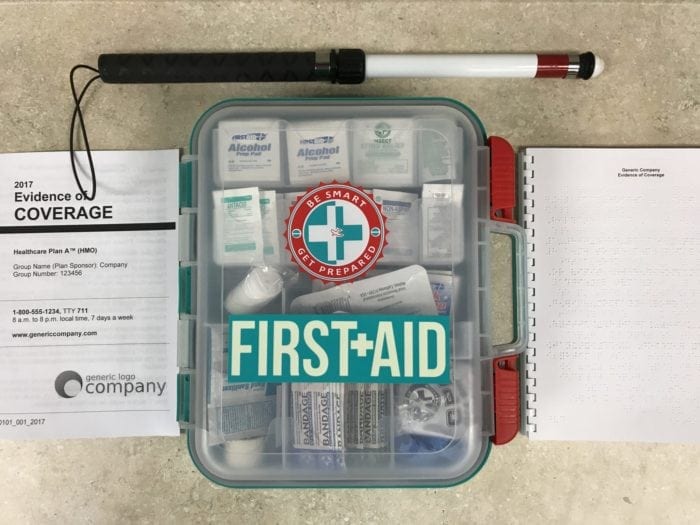Disaster Preparedness for People with Visual Disabilities
Published onPreparing for a Natural Disaster
The time to prepare for a natural disaster is today. From hurricanes or wildfires to tornados and blizzards, these disasters can cause devastation to many in the path. Taking disaster preparedness steps early is the key to keeping you and your loved ones safe.
Steps to Take Before an Emergency
Start preparing for an emergency before it occurs. It’s essential to learn about local resources, gather supplies, and register for services. However, for people with disabilities, disaster preparedness requires additional planning.
Register for Services and Needs
Be proactive and contact your local city or county emergency services department to register for a Priority Needs List. A phone call will alert rescue services that you have a need that might require additional intervention in an emergency.
Check and see if Smart 9-1-1 is available in your area. Smart 9-1-1 is a registration system that will send your info to an operator when you call. It also sends emergency alerts and places those in need on a priority list.
You can also register with your utility company for placement on the emergency restorative services list.
Educate Yourself
Many local and federal agencies have informative guides, and registration services should a disaster occur. The Red Cross has a lot of information that is vital for before and after a disaster. Locally, it is a good idea to locate the closest shelter.
Plan Ahead
Have a backup plan. This will include one in town and out of town. Also, have an evacuation plan and know how you will access it. It’s important to request bank statements, health records, insurance documents, and other valuable information in a format that you can access. By law, you can ask for these items in an accessible format. The key is requesting early, as it takes time to prepare the documents.
Caring for Others
Gather documents and extra supplies for all members of your household. Discuss emergency plans, and assign each person a specific task.
If you have a service animal or pet and are looking for a shelter, it is vital to have duplicates of all their documents, shot records, and supplies stored in a safe place.
Let your neighbors know if you are evacuating when the time comes to make a decision. If you are staying in your home, let neighbors and the local authorities know. Warning: once mandatory evacuations are ordered it is highly unlikely that emergency services will reenter until the area is deemed safe.
Gather Items
Survival and first aid kits are excellent to have up to date and stocked. The Red Cross has suggestions for what you should have per person per day.
Create a list of friends, relatives, and neighbors, including phone numbers and addresses that can be read by emergency personnel.
Have a way to take notes if needed like a slate, stylus, and paper; or a pen, notepad, and handheld magnifier.
Having an emergency radio with a phone charger is also recommended to have on hand. If you rely on an assistive device that uses batteries, be sure to have enough to get you through days without power.
Store your gathered items in a plastic bin and label them in braille or large print so you are certain to gather all of the supplies you might need.
How to Remain Safe in a Natural Disaster
The Red Cross, CDC, and FEMA have excellent materials for people with disabilities.
When disaster conditions are approaching, stay alert, keep informed, and evacuate as soon as possible.
The Time is Now
Emergencies can be stressful, but with proper planning and action, you can have peace of mind and safety. Being prepared permits you greater independence and control in uncertain times.
Categorized in: Informational, Uncategorized
This post was written by





Comments are closed here.